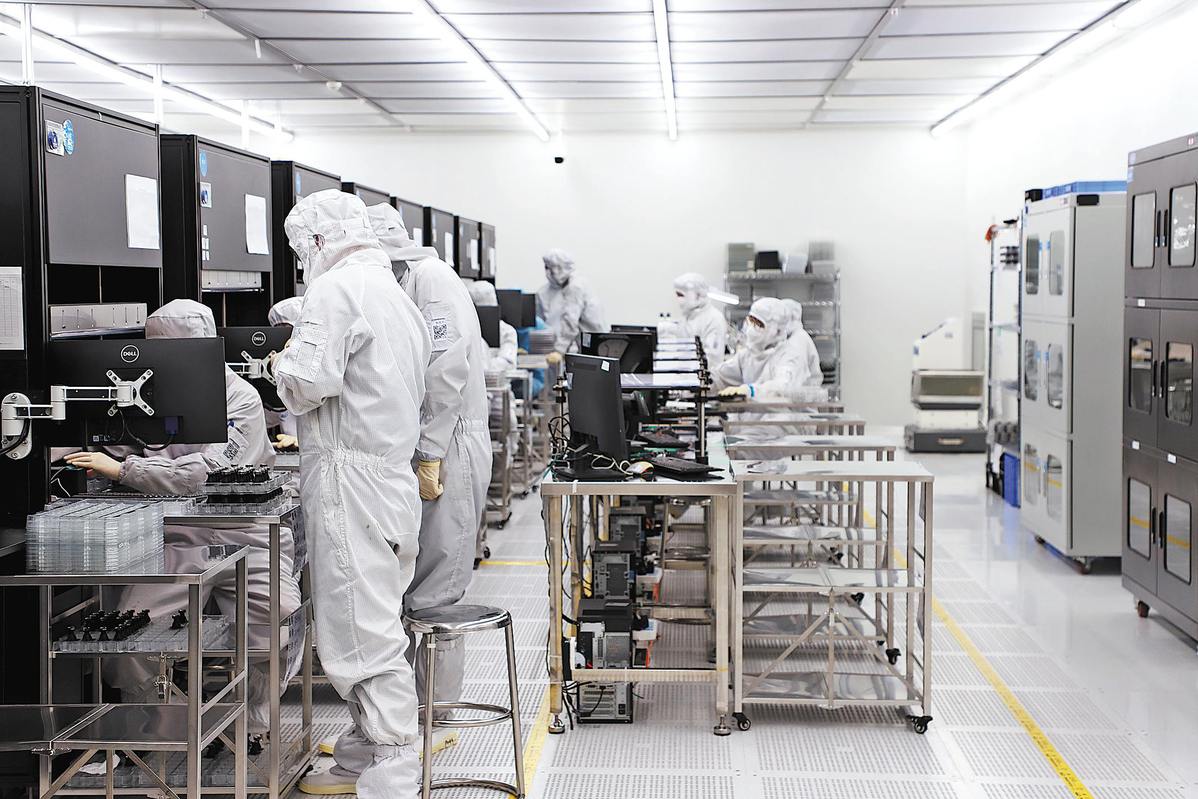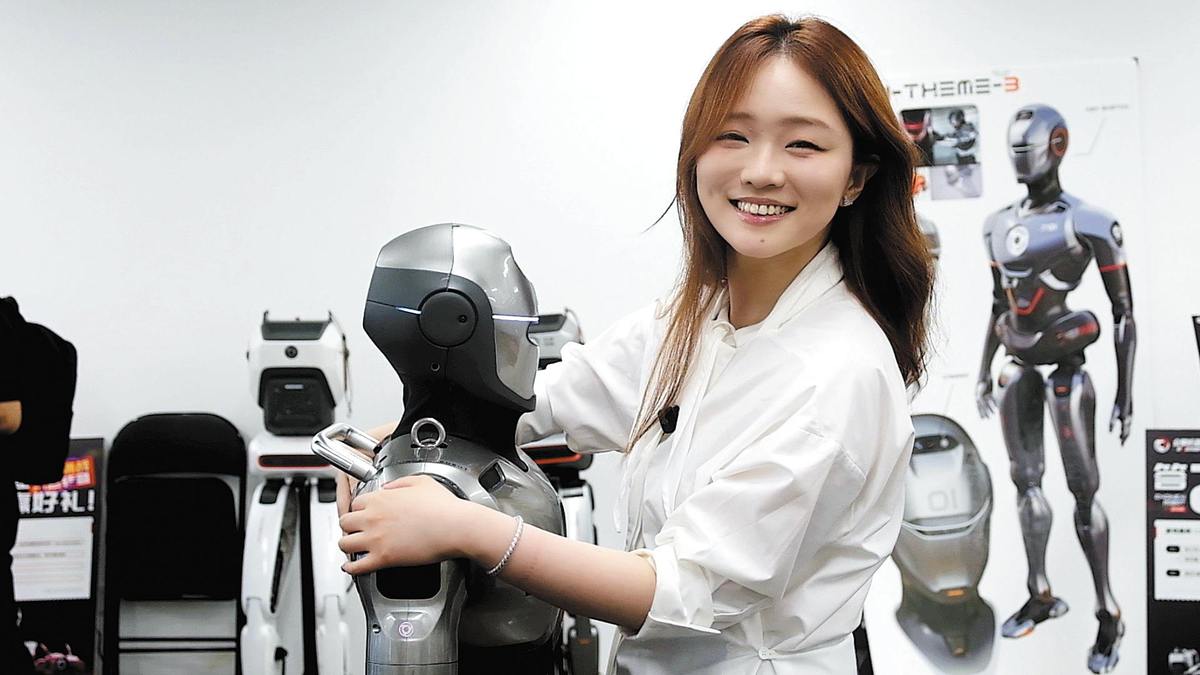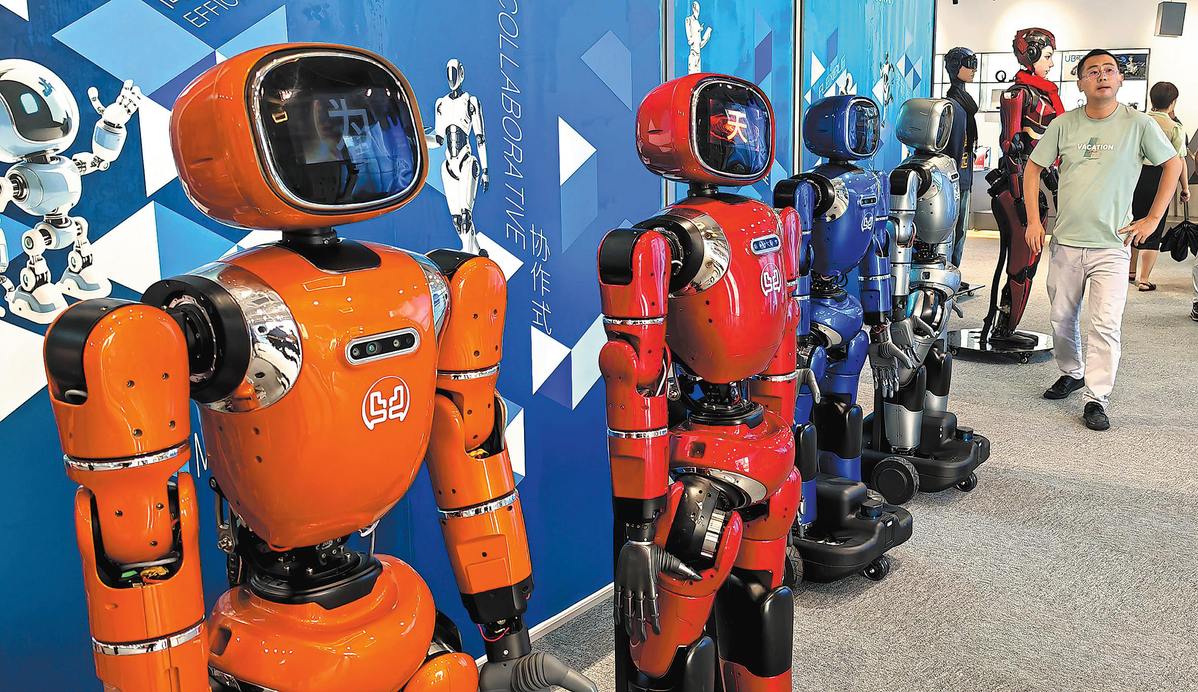
Employees work at Orbbec's lab in Shenzhen, Guangdong province. [Photo provided to China Daily]
As morning light sweeps across Shenzhen's skyline, the skyscrapers that have replaced the old fishing boats gleam in the sun. At the city's core, the "Pioneering Bull" stands as a testament to the city's relentless innovation and drive — qualities that have shaped its evolution into a global hub since its designation as China's first special economic zone 45 years ago.
"Technological innovation is not only a defining feature of Shenzhen, but also its flagship brand. From the government to businesses and individuals, the city attaches great importance to advancing innovation," said Zhang Lin, head of the city's science, technology and innovation bureau.
According to data released by the National Bureau of Statistics late last year, Shenzhen's total research and development investment reached 223.66 billion yuan ($32.7 billion) in 2023, up 18.9 percent year-on-year — marking nine consecutive years of double-digit growth.
Notably, local enterprises contributed 93.3 percent of the total number, the highest share among all Chinese cities.
Among Shenzhen SEZ's many innovative trailblazers is Orbbec, Asia's first company to mass-produce 3D vision sensors.
Known as the "eyes" of robots, these sensors give machines the ability to perceive complex environments, avoid obstacles with precision, and navigate autonomously.
Like many cutting-edge technologies, advances in robotics and AI vision rely on heavy investment in fundamental research and development.
According to the company, between 2022 and the first half of this year, Orbbec invested nearly 1 billion yuan in R&D. As a result, it had secured 1,112 patents in 3D vision perception by the end of June 2025.
"From core sensor technologies to underlying chips and downstream application algorithms, we have built a full-stack layout for 3D sensing. This is the key to sustaining our competitiveness in the field," said Chen Bin, chief financial officer of Orbbec.
Chen said Shenzhen's innovation-driven environment, well-established industrial ecosystem and rich talent pool built over the years have all provided strong momentum for the company's growth.
"In fact, when we chose Shenzhen at the very beginning, it was because of the city's strong atmosphere of pioneering and innovation. We usually require talent across multiple fields such as chips, algorithms, electronics, engineering and more. Decades of accumulation in Shenzhen have created fertile ground for attracting such professionals."

A China Daily reporter interacts with EngineAI's robot in Shenzhen. [Photo provided to China Daily]
Beyond components and software technologies, the pioneering city is also making strides in the broader field of humanoid robots.
EngineAI, a Shenzhen-based robotics manufacturer, recently announced with its partners that they will hold the world's first full-size humanoid robot combat tournament in the city in December.
The company said participating robots should be full-sized, capable of simulating human motion patterns, executing combative actions under defined rules, and responding to dynamic environments through intelligent decision-making systems.
"Robot combat demonstrates the comprehensive capabilities of humanoids — from motion control and environmental perception to computing power and algorithms," said Yao Aiwen, co-founder of Engine AI.
"Organizing such an event can help not only accelerate technological progress, but also test how well the industry ecosystem is working on final applications," Yao said.
Yao emphasized that supply chain support is critical in robotics manufacturing, where components require constant optimization, and Shenzhen offers precisely this foundation.
"Here, we get to optimize or upgrade component parts in just two hours. Some of our suppliers are even located in the same building, making collaboration incredibly efficient," he said.

People visit the robot 6S store in Shenzhen in July. [Photo/Xinhua]
From precision components to end-user applications, Shenzhen now boasts a complete robotics industry chain.
In 2024, the city was home to 74,032 robotics enterprises, with the sector's total output value surpassing 200 billion yuan for the first time, official data showed.
In terms of the embodied intelligent robotics sector, the city aims to expand related industries to over 100 billion yuan in scale, and foster more than 1,200 enterprises in the embodied robotics cluster, according to its action plan for embodied intelligent robotics (2025-27).
However, Shenzhen is not stopping there. Innovation is reshaping not only tech products, but also the ecosystem of services surrounding them.
On July 28, the world's first "6S store" for robots opened in Shenzhen's Longgang district. Expanding on the traditional "4S store" model in the automotive sector, the new format incorporates "lease" and "customized" modules to create a six-in-one lifecycle service system — sales, spare parts, service, surveys, lease and customized — aiming to redefine service standards for the robotics industry.
"The 6S store breaks down the 'glass wall' between R&D and market application. It helps companies understand what the market demands and helps users see what technology can deliver. Ultimately, this pushes robots from being laboratory products to becoming everyday essentials," said Zhao Bingbing, head of Longgang's artificial intelligence (robotics) administration.
As the country's first government agency dedicated to AI, the administration represents an innovative combination of government agencies, research institutions and industry associations, Zhao said, adding that it was first established to advance the AI and robotics sectors while also meeting the evolving needs of enterprises.
"Many companies come to us seeking funding or supportive policies, but don't know which department to approach. Our role is to bridge industry needs with government resources, addressing their challenges directly," the official explained.

A view of a fishing village in Shenzhen and both banks of the Shenzhen River in the early 1980s (top) and the Hetao Shenzhen-Hong Kong Science and Technology Innovation Cooperation Zone and the Shenzhen River in September 2024. [Photos/Xinhua]
The momentum is unfolding at a historic moment. Over the past 45 years, the SEZ has grown from a GDP of just 270 million yuan in 1980 to 3.68 trillion yuan in 2024, an increase of more than 10,000-fold.
As Shenzhen marks the 45th anniversary of its special economic zone and the fifth year of its comprehensive reform pilot, the city is embarking on a new journey.
In June, a set of guidelines released by the central authorities highlighted a new batch of measures for the SEZ to pioneer the development of a modernized, globally oriented and innovation-driven city.
The guidelines call for launching a new wave of reform measures, rolling out fresh innovation trials and deepening opening-up initiatives, in an effort to break institutional barriers in education, science and talent development; strengthen the integration of innovation, industry, capital and talent chains; and explore new cooperation in the Guangdong-Hong Kong-Macao Greater Bay Area.
At a news conference themed around the guidelines, Li Chunlin, deputy head of the National Development and Reform Commission, highlighted Shenzhen's unique role as a pioneer of China's reform and opening-up.
With its advantages in leading development, abundant reform scenarios and favorable conditions for breakthroughs, Shenzhen SEZ has launched a series of exploratory measures in institutional opening-up, scientific innovation, talent development and governance models, Li said.
"These reform initiatives carry distinct originality and pioneering value, and their outcomes will play an important role in setting an example nationwide."

A view of the sculpture of the "Pioneering Bull" in front of the Shenzhen Stock Exchange. [Photo/Xinhua]






